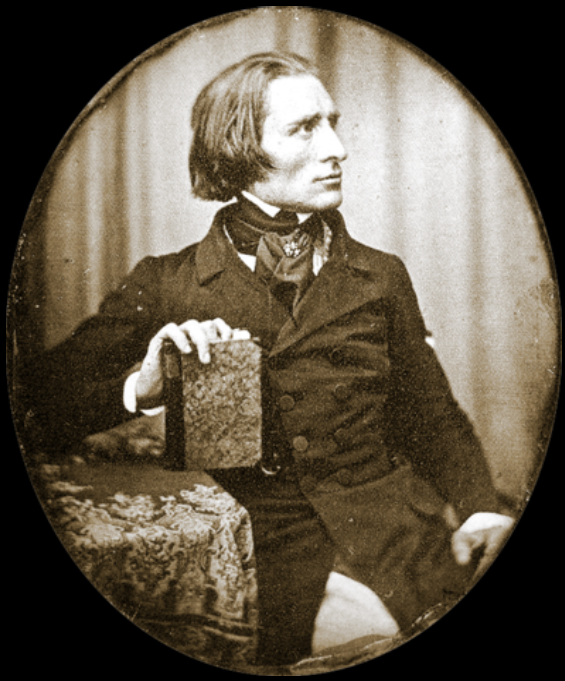Published on Franz Liszt Group, on June 1, 2021. If you want to know how the Story Behind series started, I give details in “Story Behind” Series #1″.
Original post (posted by me):
Unfortunately it is not with music as with painting and poetry: body and soul are not enough to make it comprehensible; it has to be performed, and very well performed too, to be understood and felt.
Franz Liszt

We haven’t seen a picture and a quotation for quite a while, so I decided to post both, and to tell a new “story behind”.
The picture, first. This is an important one. It is the earliest known photograph taken of Liszt. In fact, it is not a photograph, it is called a daguerreotype, after the name of the inventor of this early photographic technique, Louis-Jacques-Mandé Daguerre. It consists of silver-coated, polished copper plates that are made light-sensitive with iodine vapors immediately before the photograph is taken. After exposure in a camera obscura, the latent image is developed with mercury vapors and fixed with saline solution, then watered and dried. The finished positive was unique, so there was no negative and therefore no prints. The photographed object was reversed, this is why a reflex mirror was occasionally used later. This daguerreotype was taken by Hermann Biow who opened one of the first photographic studios of Germany in Altona, and then in Hamburg. It was done on June 27, 1843 in Hamburg, for the purpose of an exhibition of portraits. This portrait can be seen the way people saw it at the exhibition.
The quote, now. This is an excerpt of a letter Liszt wrote to his friend the Abbé de Lamennais on April 28, 1845. He was in Marseilles, France, at that time, in the middle of his European touring years. I tried to choose a quote that was written approximately at the same period the picture was taken. In this letter, Liszt talks about a score of a vocal work that Lamennais suggested him to compose. The music in question is not known. He told Lamennais that he finished it but he didn’t want to share the score with him, he wanted him to hear the music. In the same letter he is also mentioning the Beethoven Monument in Bonn (the one that he almost entirely financed) and the Cantata he wrote for the inauguration. About the text used for the Cantata, he wrote in this letter: “The text, at any rate, is tolerably new; it is a sort of Magnificat of human Genius conquered by God in the eternal revelation through time and space, – a text which might apply equally well to Goethe or Columbus, as to Beethoven.”
I hope you enjoyed this new “story behind” episode 🙂
